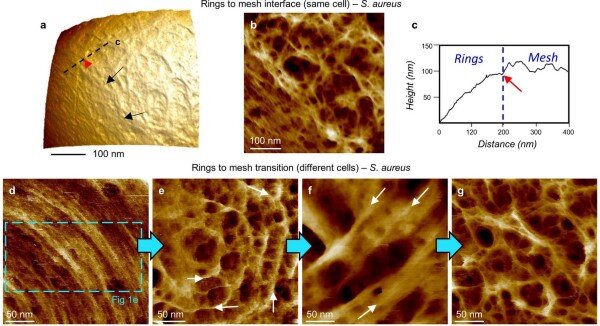What a year 2020 has been. Few of us, if any, could have predicted the decade would start in the way it has. Fewer still could perhaps have imagined that, after health workers, scientists would take centre stage in importance in the eyes of the world, on the frontline in the battle against the global pandemic that COVID 19 became.
In many respects 2020 has been a dark year. In addition to many of us experiencing personal tragedy in the form of friends, relatives or loved-ones becoming ill or dying from the virus, it has been a tough year emotionally, socially and financially. Many offices, labs and universities were temporarily closed preventing research from progressing; most of us have spent a significant proportion of our year working from home, establishing a new normal in which we are limited in our social interaction to those we live with and those we can see through video calls; many businesses have had to close permanently.
Yet equally out of the strangest of years good has also emerged. Many of us have had the opportunity to spend more time with our families, our children in particular, than we might in a normal year; we have borne witness to no end of scientists finding new and innovative ways of continuing their work (from some taking their AFMs home, to others tuning in to remote AFM imaging); businesses have found new ways of working; not one but three vaccines for COVID-19 have been successfully produced and are coming online for distribution in the coming months.
We feel like we’re rounding the year out on a positive note here at NuNano too. Despite the various challenges that the first lockdown brought, with the temporary halt in production and staff on furlough, we’ve emerged stronger than before, ending our financial year with record revenues. We’d like to take this opportunity to say a huge thank you to our customers and partners for their continued support of us throughout this time.
Amongst other things, we’ve also continued to track the publication of research that uses AFM throughout the year. We have been highlighting and saluting the important work that continued across a wide range of topics. Below are a selection of the ones that received the greatest numbers of likes, shares and reposts from our #AFMCommunity via social media.
We hope you enjoy our review of the year in papers and want to take this opportunity to wish you and yours a happy, healthy and hopeful festive period. We look forward to catching up once again in 2021. Potentially even in person…
Top AFM related papers:
1.
Our first and favourite paper of the year, published on bioRxiv, preprint server, written by Kiss et al is on the subject of AFM and Coronavirus. By imaging and mechanically manipulating individual, native SARS-CoV-2 virions with atomic force microscope, Kiss and the team have shown the native coronavirus 2 displays a dynamic surface layer of spikes, a large mechanical compliance and unique self-healing capacity – full paper here: https://www.biorxiv.org/content/10.1101/2020.09.17.302380v1.full
2.
Our next most popular paper, also published on bioRxiv preprint server, written by Pyne et al was on the subject of ‘TopoStats’, a new Python toolkit for automated editing and analysis of Atomic Force Microscopy images. The program includes identification and tracing of individual molecules in both circular and linear conformations without user input and is freely available via GitHub (https://github.com/AFM-SPM/TopoStats). In the paper the team demonstrate the power of TopoStats by identifying and tracing individual biomolecules, including DNA origami, pore-forming proteins, and DNA molecules in both closed circular and linear form. Full paper here: https://www.biorxiv.org/content/10.1101/2020.09.23.309609v1.full
3.
The next paper in our round up is perhaps the one we’re most proud of personally as our MD James Vicary and process engineer Richard Perry are co-authors. The 'Calibrated Kelvin-probe force microscopy of 2D materials using Pt-coated probes', published in the Journal of Physics Communications and written by Corte-Leon et all shares research conducted using our SPARK probes.
Kelvin Probe Force Microscopy (KPFM) has been found to be extremely useful in the semiconductor industry, and now is becoming more and more important in the growing field of 2D materials.
However, proper calibration of the technique to obtain reliable and consistent work-function values is still challenging. To reduce uncertainty, the team show how the calibration method is applied to optimize Pt-coated probes, which are then used to characterize the work function of a 2D material. Full paper here: https://iopscience.iop.org/article/10.1088/2399-6528/abb984
4.
Another virus related paper: Published in Nano Letters by Wong et al, this paper uses high-speed AFM to reveal realtime observations of the structural dynamics of the hemagglutinin proteins, during viral entry of influenza A.
The findings of Wong et al provide important insights for the mechanism of HA-mediated membrane fusion. In addition, their work also demonstrates the advantages of HS-AFM for studying biological processes. Lim and Wong said: "This study strongly suggests that HS-AFM is a feasible tool, not only for investigating the molecular dynamic of viral fusion proteins, but also for visualizing the interaction between viral fusion proteins and their target membranes."
Full paper here: https://pubs.acs.org/doi/10.1021/acs.nanolett.0c01755
5.
Our fifth paper of the year, published in Nature by Pasquina-Lemonche et al, uses AFM to interrogate bacterial cell walls as part of the teams research in the fight against antimicrobial resistance.
Using AFM revealed the molecular architecture of the cell envelope. This contributes to a wider understanding of its mechanical properties and role as the environmental interface. The information provided is complementary to traditional structural biology approaches.
We were particularly pleased as we made a small contribution to the work by proving silicon substrates for some of the measurements! Full paper here: https://www.nature.com/articles/s41586-020-2236-6
If you like this blog post you make also like ‘The multidisciplinary nature of AFM’
And make sure to sign up for our newsletter to get NuNano AFM Community emails and hear about our latest blogs, news and products.






